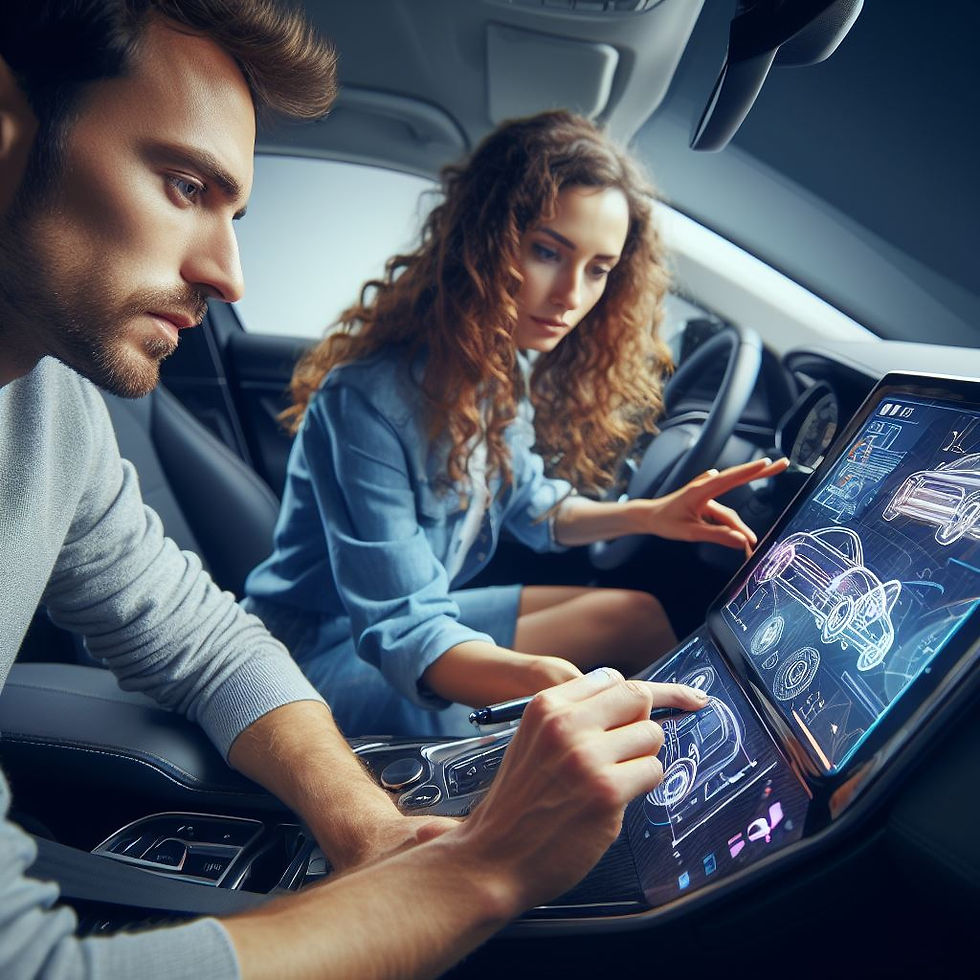Navigating the Future of Driving: UX and UI Design Trends for Infotainment Systems
- Ahmet TIRAK
- Nov 25, 2023
- 2 min read
In today's connected vehicles, infotainment systems serve as the central hub for navigation, entertainment, and communication. As technology advances and user expectations evolve, the design of these systems must adapt to meet the demands of a modern driving experience.

Here's a look at some key UX and UI design trends shaping the future of infotainment systems:
1. Personalization and Customization:
Infotainment systems are becoming increasingly personalized, allowing users to tailor their experience to their preferences. This includes customized home screens, voice recognition profiles, and adaptive settings that adjust based on driving conditions and user behavior.
2. Seamless Integration and Multimodality:
Infotainment systems are seamlessly integrating with smartphones and other devices, enabling effortless data sharing and voice control. Multimodal interactions, combining voice, touch, and gesture recognition, are becoming increasingly prevalent, providing users with more natural and intuitive ways to interact with their vehicles.
3. Context-Aware Design:
Infotainment systems are becoming more context-aware, providing relevant information and services based on the driving situation and user needs. This includes real-time traffic updates, predictive navigation, and hands-free access to important functions, enhancing safety and convenience.
4. Augmented Reality (AR) Integration:
AR is poised to revolutionize infotainment systems, overlaying virtual information onto the real world. This includes AR navigation, AR parking assistance, and AR-enhanced entertainment experiences, providing a more immersive and engaging user experience.
5. Visual Appeal and Simplicity:
Infotainment systems are adopting a minimalist aesthetic, prioritizing clear and intuitive interfaces that minimize distractions and cognitive load. This includes uncluttered layouts, consistent visual design elements, and easy-to-navigate menus, ensuring a seamless and enjoyable user experience.
6. Voice Control and AI-Powered Assistance:
Voice control is becoming the primary mode of interaction with infotainment systems, allowing hands-free operation and reducing visual distractions. AI-powered voice assistants are also gaining prominence, providing personalized assistance, proactive suggestions, and predictive interactions.
7. Cybersecurity and Privacy:
As infotainment systems become more connected, cybersecurity and privacy are becoming paramount. Designers must prioritize data security, user privacy controls, and transparent data handling practices to ensure user trust and confidence.
8. Adaptability and Future-Proofing:
Infotainment systems must be adaptable to future technologies and evolving user needs. This includes modular designs, open-source platforms, and over-the-air software updates, ensuring longevity and compatibility with emerging innovations.
Conclusion
The evolution of UX and UI design for infotainment systems is driven by the convergence of technology, user expectations, and safety considerations. By embracing personalization, seamless integration, context-awareness, AR integration, visual simplicity, voice control, AI assistance, cybersecurity, and adaptability, designers can create infotainment systems that enhance the driving experience, promote safety, and foster a connected and enjoyable journey for users.



As infotainment systems become more advanced with personalized settings and seamless smartphone integration, screen reliability becomes vital for user experience. If your in-car display suddenly malfunctions or shows unusual behavior, one smart way to diagnose issues is to launch a blank black screen using blackSCreenonl. This tool fills your screen with a solid black background—perfect for checking backlight uniformity, detecting screen burn-in, or spotting dead pixels. Especially in multimodal systems that rely heavily on visual interaction, a clear and functional display ensures safety and ease of use. It’s a quick, effective test before seeking technical support.